Teaching Vegetables Name For Kids
Vegetables are colorful, nutritious and they come in variation of tastes and shapes. It’s important to include vegetables name for kids in learning to serve your kids a variety of vegetables, prepared in a variety of ways, to grow kids that aren’t picky and maintain a healthy diet. They are a rich source of different vitamins and minerals that is required by your body in order to become healthy and perform function. They are also a great source of vitamins and nutrients making them an excellent meal choice for children and adults to stay healthy. It's a fact that most children prefer sweeter tastes, and when they eat vegetables they might not find them good for their taste buds.
This article is all about vegetables name in english with picture of different varieties to make your child learn about them. We have a list and details of most of the vegetables with images representing how each one looks like when your little one will come across. Not only names and pictures but also a little basic information about the nutrient it has in it and other benefits. So the next time you would be cooking one for him, he would know about it and all the benefits it holds.
The below article holds vegetables name for kids along with vegetables information in English with kinds, names, types and photos for your little one.
1) Carrot:
Carrot is a root vegetable usually orange in color. The sweetness of carrots allows the vegetable to be used in some fruit-like roles. Carrots are rich in Protein, Iron, Vitamin C and potassium. It is very beneficial to improve eye-sight.
2) Broccoli:
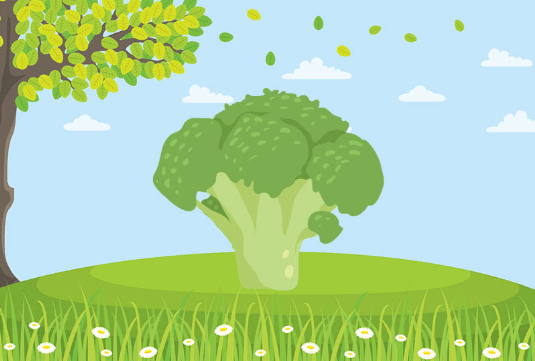 Broccoli comes under green vegetables name. These nutrition powerhouses supply loads of nutrients for few calories. They are rich in Vitamin A, C, Iron, Sodium, potassium and dietary fiber. It helps in protecting you from various diseases such as cancer and other chronic diseases and helps in making your bones stronger.
Broccoli comes under green vegetables name. These nutrition powerhouses supply loads of nutrients for few calories. They are rich in Vitamin A, C, Iron, Sodium, potassium and dietary fiber. It helps in protecting you from various diseases such as cancer and other chronic diseases and helps in making your bones stronger.
3) Peas:
 Another addition to the green vegetables name are the green peas and is one of the most popular vegetable. They contain a fair amount of fiber and anti-oxidants. They are a rich source of Vitamins A, K, C and Manganese. They may help in protecting against some chronic illnesses, such as heart disease and cancer.
Another addition to the green vegetables name are the green peas and is one of the most popular vegetable. They contain a fair amount of fiber and anti-oxidants. They are a rich source of Vitamins A, K, C and Manganese. They may help in protecting against some chronic illnesses, such as heart disease and cancer.
4) Corn:
 Corn is called maze in most countries and is a part of the grass family. It’s rich in fiber, vitamins and minerals. Corn is considered both vegetable and cereal grain. Corn is usually white or yellow but also comes in red, purple and blue. It’s eaten as sweet corn, popcorn, oil and syrup and added to different foods and dishes.
Corn is called maze in most countries and is a part of the grass family. It’s rich in fiber, vitamins and minerals. Corn is considered both vegetable and cereal grain. Corn is usually white or yellow but also comes in red, purple and blue. It’s eaten as sweet corn, popcorn, oil and syrup and added to different foods and dishes.
5) Tomatoes:
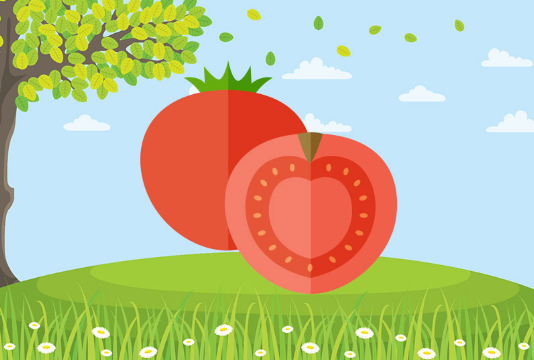
Tomatoes are the fruit of the tomato plant and because the tomato has seeds and it grows from a flowering plant so it is often classed as a fruit not a vegetable. Tomatoes vary in colors commonly red and others including green, yellow, orange, pink, black, brown, white, and purple. Tomatoes are packed with vitamins A and C, calcium, potassium.
6) Cucumber:
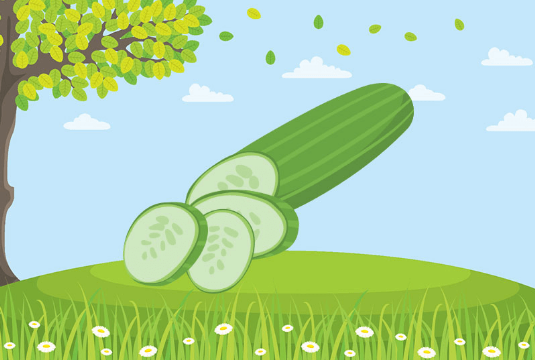 The outer skin of the cucumber is called the peel. The inner part of the cucumber is called the flesh which has seeds that are eatable. This is the yummy and crunchy part. It's high in beneficial nutrients, as well as antioxidants that may help treat and prevent some conditions. It has low calories and contain a good amount of water and soluble fiber, which helps in keeping you hydrated.
The outer skin of the cucumber is called the peel. The inner part of the cucumber is called the flesh which has seeds that are eatable. This is the yummy and crunchy part. It's high in beneficial nutrients, as well as antioxidants that may help treat and prevent some conditions. It has low calories and contain a good amount of water and soluble fiber, which helps in keeping you hydrated.
7) Potatoes:
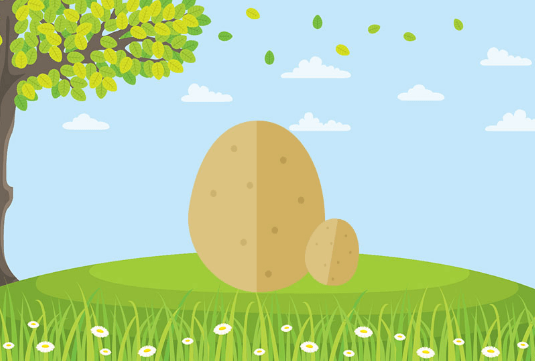 A potato is a root vegetable. They grow on the roots. The above belongs to vegetable names for kids that is one of the most commonly eaten veggie. The nutrients of potatoes can vary depending on how they are prepared. For example, frying potatoes adds more calories and fat than baking them. They are a rich source of vitamins and minerals.
A potato is a root vegetable. They grow on the roots. The above belongs to vegetable names for kids that is one of the most commonly eaten veggie. The nutrients of potatoes can vary depending on how they are prepared. For example, frying potatoes adds more calories and fat than baking them. They are a rich source of vitamins and minerals.
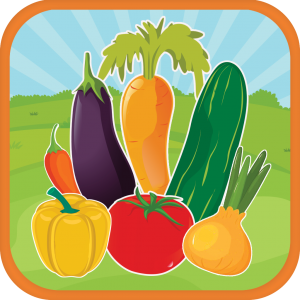
Teach your kids about vegetables through an app!
If you want a fun, free and simple vegetable app so that your child could learn vegetables? The vegetables games in this app provides children with an educational and fun platform to extend their knowledge in the most fun way. It has all the vegetables name starting from alphabets a to z which your child will be learning.
8) Cabbage:
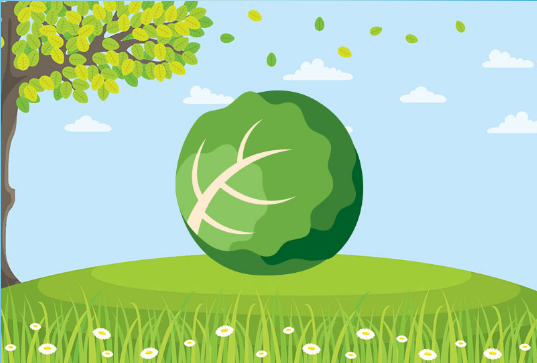 Cabbage comes in different colors like green, purple and white. Green cabbages are the most common. It is a multi-layered vegetable. Cabbage is an excellent source of vitamin K, vitamin C and vitamin B6. It is also a very good source of manganese, dietary fiber, potassium, vitamin B1, folate and copper. The health benefits includes improving functionality of brain, reduces the risk of cancer, detoxifying body, good for heart and many more.
Cabbage comes in different colors like green, purple and white. Green cabbages are the most common. It is a multi-layered vegetable. Cabbage is an excellent source of vitamin K, vitamin C and vitamin B6. It is also a very good source of manganese, dietary fiber, potassium, vitamin B1, folate and copper. The health benefits includes improving functionality of brain, reduces the risk of cancer, detoxifying body, good for heart and many more.
9) Turnips:
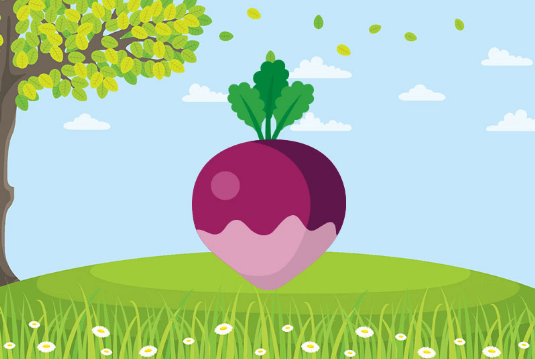 Turnips are starchy like root vegetables. They usually grow well in places with cold winters. They are sweeter in taste when harvested. Turnips can be used for the preparation of soups and various other dishes. It can also be consumed fresh, in the form of salads. It is a rich source of carbohydrates, magnesium and fiber. It also helps prevent development of certain types of cancer and cardiovascular disorders.
Turnips are starchy like root vegetables. They usually grow well in places with cold winters. They are sweeter in taste when harvested. Turnips can be used for the preparation of soups and various other dishes. It can also be consumed fresh, in the form of salads. It is a rich source of carbohydrates, magnesium and fiber. It also helps prevent development of certain types of cancer and cardiovascular disorders.
10) Onions:
 Onions are considered a part of the bulb family as the bulb shaped part is which grows under the ground. There are 27 different types of onions. All onions grow under the ground and have bluish-green tubes that grow above the ground. These tubes are also called as onion tops by many people. It is very easy to grow onion as they grow in any soil type. Onions are low in calories, high in calcium and vitamin C.
Onions are considered a part of the bulb family as the bulb shaped part is which grows under the ground. There are 27 different types of onions. All onions grow under the ground and have bluish-green tubes that grow above the ground. These tubes are also called as onion tops by many people. It is very easy to grow onion as they grow in any soil type. Onions are low in calories, high in calcium and vitamin C.
11) Beetroot:
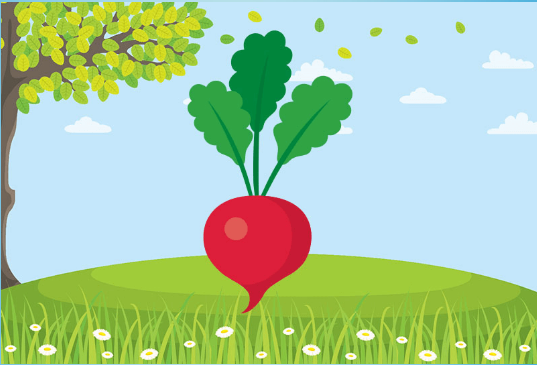 The vegetables name for kids must include beetroot also known as table beet, garden beet and golden beet which comes in deep purple color and is a highly nutritious vegetable. The purple part is eaten raw or boiled. It is a rich source of carbohydrates and also comprises of 99% water. The leaves of a beetroot are also edible and can be used in salads.
The vegetables name for kids must include beetroot also known as table beet, garden beet and golden beet which comes in deep purple color and is a highly nutritious vegetable. The purple part is eaten raw or boiled. It is a rich source of carbohydrates and also comprises of 99% water. The leaves of a beetroot are also edible and can be used in salads.
12) Capsicum:
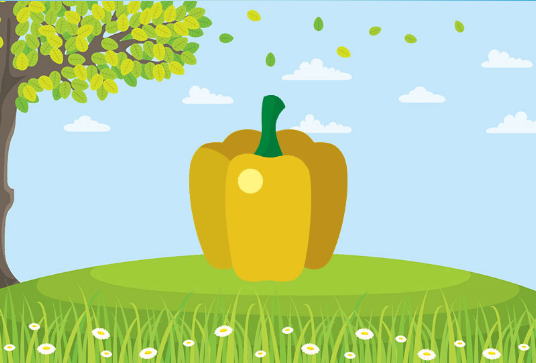 Capsicums, also known as ‘bell peppers’ or just ‘peppers’ are not generally spicy but are used to add up a hint of it to the dish. They come in various colors commonly green, yellow and red. They contain high amount of vitamin A and C along with other vitamins and minerals. They can be cooked or eaten raw and are also used in salads.
Capsicums, also known as ‘bell peppers’ or just ‘peppers’ are not generally spicy but are used to add up a hint of it to the dish. They come in various colors commonly green, yellow and red. They contain high amount of vitamin A and C along with other vitamins and minerals. They can be cooked or eaten raw and are also used in salads.
13) Cauliflower:
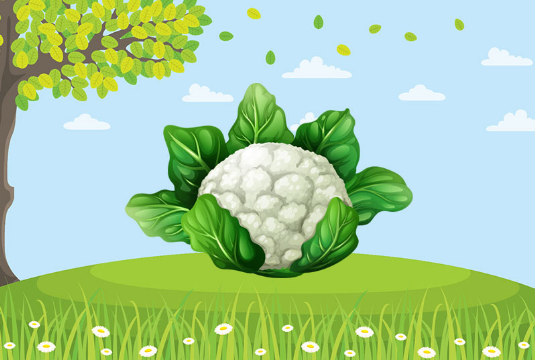 It is called cauliflower because it appears to be like one. The inner part we eat consists of clusters of flower. It helps fight cancer, improves cardiovascular health and maintains a healthy brain function. It comes in various colors but the white one is common amongst all. It is a rich source of vitamins C, K and B6. It helps relief indigestion, respiratory issues and improves sight.
It is called cauliflower because it appears to be like one. The inner part we eat consists of clusters of flower. It helps fight cancer, improves cardiovascular health and maintains a healthy brain function. It comes in various colors but the white one is common amongst all. It is a rich source of vitamins C, K and B6. It helps relief indigestion, respiratory issues and improves sight.
14) Garlic:
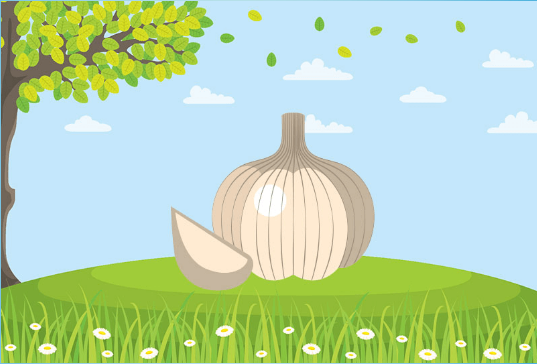 It has the anti-bacterial properties that helps kill bacteria. It’s delicious to eat and is a main part of the widely loved dishes such as pizza. It is from the onion family and comes in various forms such as dried and powdered. You have to remove the upper part (coating) to get cloves.
It has the anti-bacterial properties that helps kill bacteria. It’s delicious to eat and is a main part of the widely loved dishes such as pizza. It is from the onion family and comes in various forms such as dried and powdered. You have to remove the upper part (coating) to get cloves.
15) Lettuce:
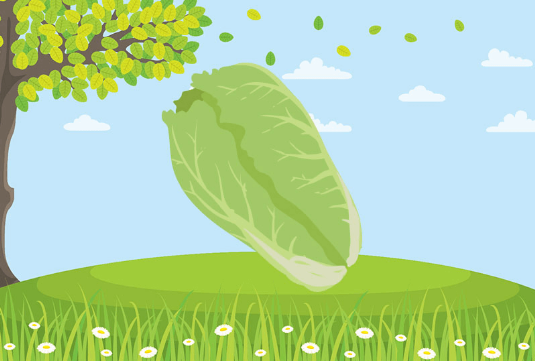 A leafy vegetable that belongs to the sunflower family. It is covered in leaves and is the main ingredient for salads and sandwiches. It is loaded with large amounts of potassium, vitamin A, iron, calcium and copper. It is best grown in mild weather.
A leafy vegetable that belongs to the sunflower family. It is covered in leaves and is the main ingredient for salads and sandwiches. It is loaded with large amounts of potassium, vitamin A, iron, calcium and copper. It is best grown in mild weather.
Colorful and crunchy vegetables are an important and enjoyable part of your child’s diet and this article beholds vegetables name with picture for kids to make them learn names and kinds of different vegetables information in English. Vegetables contain nutrients that are essential for your child’s diet and help them in order to grow. They must know what nutrients it holds and what benefits it aids in helping them become healthy and strong. If you eat and enjoy vegetables with your little one every day and telling them about the health benefits of each, it would encourage him to eat it. If you follow healthy habits, eventually your child would do the same. Learning the right foods to eat while younger aids a lifetime of healthy living choices. This article provides a platform to teach your kids about the importance of vegetables along with vegetables name for kids and healthy eating.










